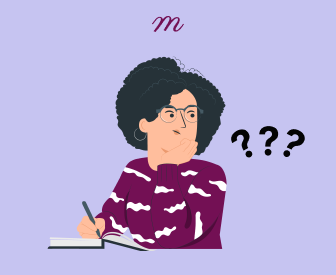
Writing a Counselling Case Study
As a counselling student, you may feel daunted when faced with writing your first counselling case study. Most training courses that qualify you as a counsellor or psychotherapist require you to complete case studies.
Before You Start Writing a Case Study

However good your case study, you won’t pass if you don’t meet the criteria set by your awarding body. So before you start writing, always check this, making sure that you have understood what is required.
For example, the ABC Level 4 Diploma in Therapeutic Counselling requires you to write two case studies as part of your external portfolio, to meet the following criteria:
- 4.2 Analyse the application of your own theoretical approach to your work with one client over a minimum of six sessions.
- 4.3 Evaluate the application of your own theoretical approach to your work with this client over a minimum of six sessions.
- 5.1 Analyse the learning gained from a minimum of two supervision sessions in relation to your work with one client.
- 5.2 Evaluate how this learning informed your work with this client over a minimum of two counselling sessions.
If you don’t meet these criteria exactly – for example, if you didn’t choose a client who you’d seen for enough sessions, if you described only one (rather than two) supervision sessions, or if you used the same client for both case studies – then you would get referred.
Check whether any more information is available on what your awarding body is looking for – e.g. ABC publishes regular ‘counselling exam summaries’ on its website; these provide valuable information on where recent students have gone wrong.
Selecting the Client
When you reflect on all the clients you have seen during training, you will no doubt realise that some clients are better suited to specific case studies than others. For example, you might have a client to whom you could easily apply your theoretical approach, and another where you gained real breakthroughs following your learning in supervision. These are good ones to choose.
Opening the Case Study
It’s usual to start your case study with a ‘pen portrait’ of the client – e.g. giving their age, gender and presenting issue. You might also like to describe how they seemed (in terms of both what they said and their body language) as they first entered the counselling room and during contracting.

If your agency uses assessment tools (e.g. CORE-10, WEMWBS, GAD-7, PHQ-9 etc.), you could say what your client scored at the start of therapy.
Free Handout Download
Writing a Case Study: 5 Tips
Describing the Client’s Counselling Journey
This is the part of the case study that varies greatly depending on what is required by the awarding body. Two common types of case study look at application of theory, and application of learning from supervision. Other possible types might examine ethics or self-awareness.
Theory-Based Case Studies
If you were doing the ABC Diploma mentioned above, then 4.1 would require you to break down the key concepts of the theoretical approach and examine each part in detail as it relates to practice. For example, in the case of congruence, you would need to explain why and how you used it with the client, and the result of this.
Meanwhile, 4.2 – the second part of this theory-based case study – would require you to assess the value and effectiveness of all the key concepts as you applied them to the same client, substantiating this with specific reasons. For example, you would continue with how effective and important congruence was in terms of the theoretical approach in practice, supporting this with reasoning.
In both, it would be important to structure the case study chronologically – that is, showing the flow of the counselling through at least six sessions rather than using the key concepts as headings.
Supervision-Based Case Studies
When writing supervision-based case studies (as required by ABC in their criteria 5.1 and 5.2, for example), it can be useful to use David Kolb’s learning cycle, which breaks down learning into four elements: concrete experience, reflective observation, abstract conceptualisation and active experimentation.
Rory Lees-Oakes has written a detailed guide on writing supervision case studies – entitled How to Analyse Supervision Case Studies. This is available to members of the Counselling Study Resource (CSR).
Closing Your Case Study
In conclusion, you could explain how the course of sessions ended, giving the client’s closing score (if applicable). You could also reflect on your own learning, and how you might approach things differently in future.
How to Write a Case Conceptualization: 10 Examples (+ PDF)

Such understanding can be developed by reading relevant records, meeting with clients face to face, and using assessments such as a mental status examination.
As you proceed, you are forming a guiding concept of who this client is, how they became who they are, and where their personal journey might be heading.
Such a guiding concept, which will shape any needed interventions, is called a case conceptualization, and we will examine various examples in this article.
Before you continue, we thought you might like to download our three Positive CBT Exercises for free . These science-based exercises will provide you with detailed insight into positive Cognitive-Behavioral Therapy (CBT) and give you the tools to apply it in your therapy or coaching.
This Article Contains:
What is a case conceptualization or formulation, 4 things to include in your case formulation, a helpful example & model, 3 samples of case formulations, 6 templates and worksheets for counselors, relevant resources from positivepsychology.com, a take-home message.
In psychology and related fields, a case conceptualization summarizes the key facts and findings from an evaluation to provide guidance for recommendations.
This is typically the evaluation of an individual, although you can extend the concept of case conceptualization to summarizing findings about a group or organization.
Based on the case conceptualization, recommendations can be made to improve a client’s self-care , mental status, job performance, etc (Sperry & Sperry, 2020).

- Summary of the client’s identifying information, referral questions, and timeline of important events or factors in their life . A timeline can be especially helpful in understanding how the client’s strengths and limitations have evolved.
- Statement of the client’s core strengths . Identifying core strengths in the client’s life should help guide any recommendations, including how strengths might be used to offset limitations.
- Statement concerning a client’s limitations or weaknesses . This will also help guide any recommendations. If a weakness is worth mentioning in a case conceptualization, it is worth writing a recommendation about it.
Note: As with mental status examinations , observations in this context concerning weaknesses are not value judgments, about whether the client is a good person, etc. The observations are clinical judgments meant to guide recommendations.
- A summary of how the strengths, limitations, and other key information about a client inform diagnosis and prognosis .
You should briefly clarify how you arrived at a given diagnosis. For example, why do you believe a personality disorder is primary, rather than a major depressive disorder?
Many clinicians provide diagnoses in formal psychiatric terms, per the International Classification of Diseases (ICD-10) or Diagnostic and Statistical Manual of Mental Disorders (DSM-5). Some clinicians will state a diagnosis in less formal terms that do not coincide exactly with ICD-10 or DSM-5 codes. What is arguably more important is that a diagnostic impression, formal or not, gives a clear sense of who the person is and the support they need to reach their goals.
Prognosis is a forecast about whether the client’s condition can be expected to improve, worsen, or remain stable. Prognosis can be difficult, as it often depends on unforeseeable factors. However, this should not keep you from offering a conservative opinion on a client’s expected course, provided treatment recommendations are followed.

Download 3 Free Positive CBT Exercises (PDF)
These detailed, science-based exercises will equip you or your clients with tools to find new pathways to reduce suffering and more effectively cope with life stressors.
Download 3 Free Positive CBT Tools Pack (PDF)
By filling out your name and email address below.
Based on the pointers for writing a case conceptualization above, an example for summarizing an adolescent case (in this instance, a counseling case for relieving depression and improving social skills) might read as follows.
Background and referral information
This is a 15-year-old Haitian–American youth, referred by his mother for concerns about self-isolation, depression, and poor social skills. He reportedly moved with his mother to the United States three years ago.
He reportedly misses his life and friends in Haiti. The mother states he has had difficulty adjusting socially in the United States, especially with peers. He has become increasingly self-isolating, appears sad and irritable, and has started to refuse to go to school.
His mother is very supportive and aware of his emotional–behavioral needs. The youth has been enrolled in a social skills group at school and has attended three sessions, with some reported benefit. He is agreeable to start individual counseling. He reportedly does well in school academically when he applies himself.
Limitations
Behavioral form completed by his mother shows elevated depression scale (T score = 80). There is a milder elevation on the inattention scale (T score = 60), which suggests depression is more acute than inattention and might drive it.
He is also elevated on a scale measuring social skills and involvement (T score = 65). Here too, it is reasonable to assume that depression is driving social isolation and difficulty relating to peers, especially since while living in Haiti, he was reportedly quite social with peers.
Diagnostic impressions, treatment guidance, prognosis
This youth’s history, presentation on interview, and results of emotional–behavioral forms suggest some difficulty with depression, likely contributing to social isolation. As he has no prior reported history of depression, this is most likely a reaction to missing his former home and difficulty adjusting to his new school and peers.
Treatments should include individual counseling with an evidence-based approach such as Cognitive-Behavioral Therapy (CBT). His counselor should consider emotional processing and social skills building as well.
Prognosis is favorable, with anticipated benefit apparent within 12 sessions of CBT.
How to write a case conceptualization: An outline
The following outline is necessarily general. It can be modified as needed, with points excluded or added, depending on the case.
- Client’s gender, age, level of education, vocational status, marital status
- Referred by whom, why, and for what type of service (e.g., testing, counseling, coaching)
- In the spirit of strengths-based assessment, consider listing the client’s strengths first, before any limitations.
- Consider the full range of positive factors supporting the client.
- Physical health
- Family support
- Financial resources
- Capacity to work
- Resilience or other positive personality traits
- Emotional stability
- Cognitive strengths, per history and testing
- The client’s limitations or relative weaknesses should be described in a way that highlights those most needing attention or treatment.
- Medical conditions affecting daily functioning
- Lack of family or other social support
- Limited financial resources
- Inability to find or hold suitable employment
- Substance abuse or dependence
- Proneness to interpersonal conflict
- Emotional–behavioral problems, including anxious or depressive symptoms
- Cognitive deficits, per history and testing
- Diagnoses that are warranted can be given in either DSM-5 or ICD-10 terms.
- There can be more than one diagnosis given. If that’s the case, consider describing these in terms of primary diagnosis, secondary diagnosis, etc.
- The primary diagnosis should best encompass the client’s key symptoms or traits, best explain their behavior, or most need treatment.
- Take care to avoid over-assigning multiple and potentially overlapping diagnoses.
When writing a case conceptualization, always keep in mind the timeline of significant events or factors in the examinee’s life.
- Decide which events or factors are significant enough to include in a case conceptualization.
- When these points are placed in a timeline, they help you understand how the person has evolved to become who they are now.
- A good timeline can also help you understand which factors in a person’s life might be causative for others. For example, if a person has suffered a frontal head injury in the past year, this might help explain their changeable moods, presence of depressive disorder, etc.

Sample #1: Conceptualization for CBT case
This is a 35-year-old Caucasian man referred by his physician for treatment of generalized anxiety.
Strengths/supports in his case include willingness to engage in treatment, high average intelligence per recent cognitive testing, supportive family, and regular physical exercise (running).
Limiting factors include relatively low stress coping skills, frequent migraines (likely stress related), and relative social isolation (partly due to some anxiety about social skills).
The client’s presentation on interview and review of medical/psychiatric records show a history of chronic worry, including frequent worries about his wife’s health and his finances. He meets criteria for DSM-5 generalized anxiety disorder. He has also described occasional panic-type episodes, which do not currently meet full criteria for panic disorder but could develop into such without preventive therapy.
Treatments should include CBT for generalized anxiety, including keeping a worry journal; regular assessment of anxiety levels with Penn State Worry Questionnaire and/or Beck Anxiety Inventory; cognitive restructuring around negative beliefs that reinforce anxiety; and practice of relaxation techniques, such as progressive muscle relaxation and diaphragmatic breathing .
Prognosis is good, given the evidence for efficacy of CBT for anxiety disorders generally (Hofmann, Asnaani, Vonk, Sawyer, & Fang, 2012).
Sample #2: Conceptualization for DBT case
This 51-year-old Haitian–American woman is self-referred for depressive symptoms, including reported moods of “rage,” “sadness,” and “emptiness.” She says that many of her difficulties involve family, friends, and coworkers who regularly “disrespect” her and “plot against her behind her back.”
Her current psychiatrist has diagnosed her with personality disorder with borderline features, but she doubts the accuracy of this diagnosis.
Strengths/supports include a willingness to engage in treatment, highly developed and marketable computer programming skills, and engagement in leisure activities such as playing backgammon with friends.
Limiting factors include low stress coping skills, mild difficulties with attention and recent memory (likely due in part to depressive affect), and a tendency to self-medicate with alcohol when feeling depressed.
The client’s presentation on interview, review of medical/psychiatric records, and results of MMPI-2 personality inventory corroborate her psychiatrist’s diagnosis of borderline personality disorder.
The diagnosis is supported by a longstanding history of unstable identity, volatile personal relationships with fear of being abandoned, feelings of emptiness, reactive depressive disorder with suicidal gestures, and lack of insight into interpersonal difficulties that have resulted in her often stressed and depressive state.
Treatments should emphasize a DBT group that her psychiatrist has encouraged her to attend but to which she has not yet gone. There should also be regular individual counseling emphasizing DBT skills including mindfulness or present moment focus, building interpersonal skills, emotional regulation, and distress tolerance. There should be a counseling element for limiting alcohol use. Cognitive exercises are also recommended.
Of note, DBT is the only evidence-based treatment for borderline personality disorder (May, Richardi, & Barth, 2016). Prognosis is guardedly optimistic, provided she engages in both group and individual DBT treatments on a weekly basis, and these treatments continue without interruption for at least three months, with refresher sessions as needed.
Sample #3: Conceptualization in a family therapy case
This 45-year-old African-American woman was initially referred for individual therapy for “rapid mood swings” and a tendency to become embroiled in family conflicts. Several sessions of family therapy also appear indicated, and her psychiatrist concurs.
The client’s husband (50 years old) and son (25 years old, living with parents) were interviewed separately and together. When interviewed separately, her husband and son each indicated the client’s alcohol intake was “out of control,” and that she was consuming about six alcoholic beverages throughout the day, sometimes more.
Her husband and son each said the client was often too tired for household duties by the evening and often had rapid shifts in mood from happy to angry to “crying in her room.”
On individual interview, the client stated that her husband and son were each drinking about as much as she, that neither ever offered to help her with household duties, and that her son appeared unable to keep a job, which left him home most of the day, making demands on her for meals, etc.
On interview with the three family members, each acknowledged that the instances above were occurring at home, although father and son tended to blame most of the problems, including son’s difficulty maintaining employment, on the client and her drinking.
Strengths/supports in the family include a willingness of each member to engage in family sessions, awareness of supportive resources such as assistance for son’s job search, and a willingness by all to examine and reduce alcohol use by all family members as needed.
Limiting factors in this case include apparent tendency of all household members to drink to some excess, lack of insight by one or more family members as to how alcohol consumption is contributing to communication and other problems in the household, and a tendency by husband and son to make this client the family scapegoat.
The family dynamic can be conceptualized in this case through a DBT lens.
From this perspective, problems develop within the family when the environment is experienced by one or more members as invalidating and unsupportive. DBT skills with a nonjudgmental focus, active listening to others, reflecting each other’s feelings, and tolerance of distress in the moment should help to develop an environment that supports all family members and facilitates effective communication.
It appears that all family members in this case would benefit from engaging in the above DBT skills, to support and communicate with one another.
Prognosis is guardedly optimistic if family will engage in therapy with DBT elements for at least six sessions (with refresher sessions as needed).
Introduction to case conceptualization – Thomas Field
The following worksheets can be used for case conceptualization and planning.
- Case Conceptualization Worksheet: Individual Counseling helps counselors develop a case conceptualization for individual clients.
- Case Conceptualization Worksheet: Couples Counseling helps counselors develop a case conceptualization for couples.
- Case Conceptualization Worksheet: Family Counseling helps counselors develop a case conceptualization for families.
- Case Conceptualization and Action Plan: Individual Counseling helps clients facilitate conceptualization of their own case, at approximately six weeks into counseling and thereafter at appropriate intervals.
- Case Conceptualization and Action Plan: Couples Counseling helps couples facilitate conceptualization of their own case, at approximately six weeks into counseling and thereafter at appropriate intervals.
- Case Conceptualization and Action Plan: Family Counseling helps families facilitate conceptualization of their own case, at approximately six weeks into counseling and thereafter at appropriate intervals.

17 Science-Based Ways To Apply Positive CBT
These 17 Positive CBT & Cognitive Therapy Exercises [PDF] include our top-rated, ready-made templates for helping others develop more helpful thoughts and behaviors in response to challenges, while broadening the scope of traditional CBT.
Created by Experts. 100% Science-based.
The following resources can be found in the Positive Psychology Toolkit© , and their full versions can be accessed by a subscription.
Analyzing Strengths Use in Different Life Domains can help clients understand their notable strengths and which strengths can be used to more advantage in new contexts.
Family Strength Spotting is another relevant resource. Each family member fills out a worksheet detailing notable strengths of other family members. In reviewing all worksheets, each family member can gain a greater appreciation for other members’ strengths, note common or unique strengths, and determine how best to use these combined strengths to achieve family goals.
Four Front Assessment is another resource designed to help counselors conceptualize a case based on a client’s personal and environmental strengths and weaknesses. The idea behind this tool is that environmental factors in the broad sense, such as a supportive/unsupportive family, are too often overlooked in conceptualizing a case.
If you’re looking for more science-based ways to help others through CBT, check out this collection of 17 validated positive CBT tools for practitioners. Use them to help others overcome unhelpful thoughts and feelings and develop more positive behaviors.
In helping professions, success in working with clients depends first and foremost on how well you understand them.
This understanding is crystallized in a case conceptualization.
Case conceptualization helps answer key questions. Who is this client? How did they become who they are? What supports do they need to reach their goals?
The conceptualization itself depends on gathering all pertinent data on a given case, through record review, interview, behavioral observation, questionnaires completed by the client, etc.
Once the data is assembled, the counselor, coach, or other involved professional can focus on enumerating the client’s strengths, weaknesses, and limitations.
It is also often helpful to put the client’s strengths and limitations in a timeline so you can see how they have evolved and which factors might have contributed to the emergence of others.
Based on this in-depth understanding of the client, you can then tailor specific recommendations for enhancing their strengths, overcoming their weaknesses, and reaching their particular goals.
We hope you have enjoyed this discussion of how to conceptualize cases in the helping professions and that you will find some tools for doing so useful.
We hope you enjoyed reading this article. For more information, don’t forget to download our three Positive CBT Exercises for free .
- Hofmann, S. G., Asnaani, A., Vonk, I. J., Sawyer, A. T., & Fang, A. (2012). The efficacy of cognitive behavioral therapy: A review of meta-analyses. Cognitive Therapy and Research , 36 (5), 427–440.
- May, J. M., Richardi, T. M., & Barth, K. S. (2016). Dialectical behavior therapy as treatment for borderline personality disorder. The Mental Health Clinician , 6 (2), 62–67.
- Sperry, L., & Sperry, J. (2020). Case conceptualization: Mastering this competency with ease and confidence . Routledge.
Share this article:
Article feedback
What our readers think.
I found this very helpful and MORE understanding. I think I will often visit this page.
Let us know your thoughts Cancel reply
Your email address will not be published.
Save my name, email, and website in this browser for the next time I comment.
Related articles

Youth Counseling: 17 Courses & Activities for Helping Teens
From a maturing body and brain to developing life skills and values, the teen years can be challenging, and mental health concerns may arise. Teens [...]

How To Plan Your Counseling Session: 6 Examples
Planning is crucial in a counseling session to ensure that time inside–and outside–therapy sessions is well spent, with the client achieving a successful outcome within [...]

Applied Positive Psychology in Therapy: Your Ultimate Guide
Without a doubt, this is an exciting time for positive psychology in therapy. Many academics and therapists now recognize the value of this fascinating, evolving [...]
Read other articles by their category
- Body & Brain (49)
- Coaching & Application (57)
- Compassion (26)
- Counseling (51)
- Emotional Intelligence (24)
- Gratitude (18)
- Grief & Bereavement (21)
- Happiness & SWB (40)
- Meaning & Values (26)
- Meditation (20)
- Mindfulness (45)
- Motivation & Goals (45)
- Optimism & Mindset (34)
- Positive CBT (28)
- Positive Communication (20)
- Positive Education (47)
- Positive Emotions (32)
- Positive Leadership (17)
- Positive Parenting (3)
- Positive Psychology (33)
- Positive Workplace (37)
- Productivity (16)
- Relationships (46)
- Resilience & Coping (36)
- Self Awareness (21)
- Self Esteem (37)
- Strengths & Virtues (31)
- Stress & Burnout Prevention (34)
- Theory & Books (46)
- Therapy Exercises (37)
- Types of Therapy (64)
Home > Blog > What is Case Conceptualization & How to Write it (With Examples)
Hate writing progress notes? Get them written automatically.
What is Case Conceptualization & How to Write it (With Examples)
Courtney Gardner, MSW

Hate writing progress notes? Join thousands of happy therapists using Mentalyc AI.
The Ultimate Guide to Case Conceptualization: Our Top Tips, Outlines, and Real-life Examples
As a mental health counselor, case conceptualization is one of the most essential skills you can develop to understand your clients and find the most effective treatment. But for new counselors, the process can be overwhelming. How do you synthesize all the information from your intake and assessment into a cohesive case conceptualization? Which theoretical orientation fits best? What should you include in your conceptualization? Let's dive in and discover the secrets to developing killer case conceptualization skills!
What Is Case Conceptualization?
Case conceptualization is the process of understanding and interpreting a client's presenting problems within the context of their individual history, personality, and current circumstances. It involves gathering and organizing information about the client, identifying patterns and themes, and formulating a comprehensive understanding of the factors contributing to their difficulties. This understanding serves as the foundation for developing a treatment plan and guiding the therapeutic process.
Why Is Case Conceptualization Important to Mental Health Professionals?
Constructing a case conceptualization is crucial for mental health professionals as it helps them better understand their clients' perspectives and needs. Professionals can develop effective therapy outcomes by analyzing clients' experiences, thoughts, behaviors, environment, and biology. This enables them to identify suitable treatment options and establish tailored treatment goals and interventions. A comprehensive approach is vital for providing evidence-based, client-centered therapy, which can lead to profound results, including improved insight, self-esteem, and motivation to make positive changes in their lives.
Let Mentalyc AI Write Your Progress Notes Fast
✅ HIPAA Compliant
✅ Insurance Compliant
✅ SOAP, DAP, EMDR, Intake notes and more
✅ Individual, Couple, Child, Family therapy types
✅ Template Builder
✅ Recording, Dictation, Text & Upload Inputs
How to Write a Case Conceptualization
To provide personalized treatment plans to your clients, it is essential to have a well-developed case conceptualization that helps you understand their mental health needs. You should include the following components early in creating your case conceptualization.
Client Information
Gather essential client information, including age, gender, relationship status, occupation, presenting problem, and relevant family and medical history.
Theoretical Orientation
Determine which theoretical approach fits their needs. This approach will guide the therapist to understand the client's symptoms and experiences through a particular lens. For example, a psychodynamic approach may focus on uncovering unconscious drives or past traumas, while a cognitive-behavioral approach looks at maladaptive thought patterns and behaviors.
If applicable, use the Diagnostic and Statistical Manual of Mental Disorders-V (DSM-5) to identify appropriate diagnoses and diagnostic codes based on your client's symptoms. Explain your conclusions.
The Eight P’s of Case Conceptualization Framework
If you aim to create a comprehensive case conceptualization, you can employ the 8 Ps framework. The Eight Ps framework helps you organize and structure your thoughts and ideas concisely and quickly. Utilizing this framework allows you to analyze and evaluate a case from multiple perspectives and develop a fully formed and well-rounded understanding of the issues at hand.

Take your time back! Get your progress notes done automatically.
Presentation.
What symptoms or life difficulties brought the client in? How do they view these problems?
- Describe the client's symptoms, concerns, and goals. Identify the main issues to address, such as depression, anxiety, trauma, or relationship difficulties. Consider the duration and severity of problems.
Predisposing Factors
What makes the client vulnerable to these problems? Genetics? Trauma?
- Consider the historical or biological factors involved in the current issue. This may include discussing the individual's developmental experiences, family history, or medical conditions. It is also essential to examine the client's natural tendencies, traits, and vulnerabilities that may make specific problems more likely.
Precipitating Factors
What recent events triggered the current problems? Loss of a job? End of a relationship?
- Investigate recent events that may have caused or intensified the client's presenting problem. Identify any losses, changes, or stressors in the client's life. These could include health issues, the end of a relationship, or the loss of a loved one. It is also crucial to examine how the client responded to these events.

Increase your practice's revenue and reduce therapist burnout
Do they live an active or sedentary lifestyle? Is their personality naturally more dependent or independent?
- Identifying predictable patterns in a person's thinking, feeling, acting, and coping reflects their baseline tendencies in stressful and non-stressful situations.
Perpetuating Factors
What factors in their lives maintain their problems? Avoidance? Unhelpful thoughts?
- Pinpoint and explore the habits, beliefs, or dynamics that maintain the problem. This means looking into their unhealthy coping strategies, cognitive distortions, relationship patterns, lack of social support, unstable living situations, and any other factors that may be contributing to the issue.
Protective Factors and Strengths
What strengths does the client have? A robust support system? Coping skills?
- Note their strengths, resources, and supports that can aid in their healing process. This may include skills, talents, social connections, access to healthcare, spirituality, and other positive factors supporting their treatment and recovery.
How will you address the problems and build on your client's strengths? Treatment modalities? Strategies?
- Establish goals and strategies considering the factors that may have caused or contributed to their condition. Identifying any protective factors the client may already have and developing interventions that build on them is also essential.
- Discuss specific interventions, referrals, and approaches. The plan should be comprehensive, regularly reviewed, and modified to ensure that it effectively reduces the client's distress, helps them change unhealthy patterns, builds new skills, and improves overall functioning. You should also consider your clinical decision-making during the initial planning stages.

Have your progress notes automatically written for you!
What's the likelihood of improvement with treatment?
- Forecast the outcome of treatment for a client based on a combination of risk factors, protective factors, the client's strengths, and their readiness for change. It would help if you discussed your initial impressions regarding the severity of the problem, the client's motivation for change, their responsiveness to intervention, and other relevant factors. You should also estimate the number of sessions required for treatment.
Tips for Mastering Effective Case Conceptualizations
Creating an effective case conceptualization requires a comprehensive, adaptable, and multidimensional approach. It involves analyzing the client's situation, embracing various perspectives, focusing on their strengths, and evolving throughout therapy. Stay curious, keep an open mind, and be willing to learn. Your clients can benefit significantly from these qualities.
Remember the following essential tips to hone your skills and make a lasting impact on your clients:
Focus on the client's strengths.
When assessing problems and symptoms, it is essential to identify your client's strengths, resources, and abilities and build on what's working to motivate change.
Look for themes and patterns.
As you gather information from your client, look for connections between their thoughts, feelings, behaviors, experiences, and relationships. Themes will emerge that shape your conceptualization.
Consider multiple perspectives.
Various theoretical orientations can be applied to comprehend a client's situation better. Exploring different perspectives can offer alternative insights into a case.
Be flexible.
It is essential to regularly revisit and update your case conceptualization as new information arises and as your client progresses.
Paint the whole picture.
An effective case conceptualization should consider cultural context, family and social relationships, medical history, life experiences, environment, and more, not merely focus on the client's symptoms or problems.
Discuss your conceptualization with colleagues.
Bouncing ideas off other therapists or discussing cases during supervision can provide valuable feedback and input, strengthening your case conceptualization from different perspectives.
Continuously evaluate your conceptualization.
During therapy, regularly review how well your understanding of the situation accounts for any new issues or lack of progress and adjust your approach accordingly. A successful interpretation should always remain an evolving theory.
Review research and theory.
It's necessary to base your case conceptualization on established theory and research to give credibility to your formulations and interventions. Keep yourself updated with the latest developments in psychotherapy and counseling.
Case Conceptualization Template
An efficient case conceptualization template helps you structure the essential components of a client's situation and establish the foundation for a focused treatment plan. By following this framework, you can guarantee that you have considered all the relevant factors and gained a comprehensive comprehension of the client and their requirements.
- Presenting problem : Briefly summarize the client's presenting issues and symptoms.
- History : Summarize relevant information about the client's family, developmental, medical, and mental health history.
- Functional analysis : Analyze the environmental, cognitive, and interpersonal factors contributing to or maintaining the client's problems. This includes triggers, consequences, and coping strategies.
- Conceptualization : Explain your theoretical model and how it helps you understand the client's difficulties. Identify key themes, patterns, and underlying processes.
- Goals : Outline the client's objectives for therapy and your treatment goals based on your conceptualization.
- Plan : Propose a treatment plan with specific interventions and strategies that address your conceptualization and the client's goals. Monitor and revise the plan as needed.
Sample Case Conceptualization #1: John
John is a 45-year-old accountant who has struggled with social anxiety and depression for most of his life. He finds it difficult to connect with others and lives a relatively isolated existence. John's anxiety causes distress in work and social situations where interaction with others is required. His anxiety and depressive symptoms have been exacerbated by several major life stressors over the past year, including a breakup with his long-term girlfriend and downsizing at his company, where he was laid off.
John sought counseling to help improve his social skills, increase confidence in social and work settings, and learn strategies to manage anxiety and depression better. Initial treatment focused on cognitive techniques to identify and reframe negative thought patterns related to social situations. Role-playing and exposure techniques were also used to help build comfort in engaging with others. John showed gradual improvement over 12 sessions. He reported feeling less anxious in work meetings and social encounters. John also started dating again and joined a local recreational sports league to increase social interaction.
John felt he had made good progress at termination but would benefit from occasional "booster" sessions to help maintain gains. Recommendations were made for John to continue practicing cognitive and exposure techniques, engage in regular exercise and social activity, and follow up with medication management as needed. John left treatment with improved coping strategies, a more balanced perspective, increased confidence in social abilities, and an overall brighter outlook.
Example of John's Case Conceptualization
I. Presenting Problem
- John sought counseling to address social anxiety, depression, and low self-confidence that had been impacting his work and social life.
- His symptoms had worsened due to recent life stressors, including a breakup and job loss.
II. Background Information
- John has struggled with social anxiety and depression for most of his life.
- He has difficulty connecting with others and lives an isolated existence.
- His anxiety causes distress in social and work situations involving interaction with others.
III. Psychosocial History
- John has a history of social anxiety dating back to childhood.
- He has few close relationships and limited social support.
- Recent life stressors have exacerbated his symptoms.
IV. Diagnostic Considerations
- Social Anxiety Disorder
- Persistent Depressive Disorder
V. Treatment Plan
- Cognitive techniques to identify and challenge negative thoughts
- Exposure exercises to build social skills and confidence
- Medication management as needed
- Recommend regular exercise, social activity, and booster sessions
- Help John develop coping strategies and a more balanced perspective

Sample Case Conceptualization #2: Jane
Jane is a 32-year-old married woman who presented with anxiety, depression, and relationship issues. She reports a lifelong struggle with feelings of inadequacy and low self-esteem. Jane's anxiety and negative self-image have contributed to difficulty asserting herself in her marriage and feeling disconnected from her husband.
Jane's symptoms worsened after the birth of her first child two years ago. She experienced postpartum depression and anxiety, which left her feeling overwhelmed as a new mother. Her husband, John, works long hours and takes on few childcare responsibilities. This has caused conflict and resentment in their relationship.
Jane sought therapy to address her depression, anxiety, and relationship problems. She wants to improve communication with her husband and negotiate a more balanced division of labor. Treatment initially focused on helping Jane identify and challenge negative automatic thoughts. Psychoeducation about assertiveness and conflict resolution strategies was provided. Role plays were used to practice effective communication and negotiation skills with her husband.
With therapy, Jane showed improvement in her mood and confidence. She was able to initiate difficult conversations with her husband about household responsibilities and childcare. Through gradual progress, Jane and her husband have found some compromise. Jane plans to continue working on assertiveness and negotiating skills to improve their relationship further. Medication may be considered in the future if symptoms do not continue to improve with therapy alone.
Example of Jane's Case Conceptualization
I. Presenting Complaints
- Relationship issues with husband
II. History of Presenting Issues
- Lifelong struggle with low self-esteem and negative self-image
- Symptoms worsened after the birth of the first child two years ago
- Experienced postpartum depression and anxiety
- Felt overwhelmed as a new mother
- Husband takes on few childcare responsibilities, causing conflict
- Married for five years, one child, age two
- Husband works long hours
- Limited social support
IV. Conceptualization
- Negative automatic thoughts contribute to anxiety and depression
- Difficulty asserting needs and communicating effectively with her husband stems from low self-esteem
- Unequal division of labor at home breeds resentment and relationship issues
- Cognitive techniques to challenge negative thoughts
- Role plays and assertiveness training to improve communication skills with husband
- Negotiation strategies for dividing household responsibilities more equitably
- Consider medication if symptoms do not improve sufficiently with therapy
Sample Case Conceptualization #3: Sally
Sally is a 45-year-old woman who presented with symptoms of anxiety, depression, and substance abuse issues. She reports a history of trauma from an abusive relationship in her 20s, which left her with trust issues and anxiety in intimate relationships.
Sally currently lives alone and works as an accountant. She struggles with loneliness and social isolation. She copes by drinking alcohol, up to a bottle of wine per night. Sally's alcohol use has negatively impacted her work and personal relationships.
Sally sought therapy to address her depression, anxiety, substance abuse, and difficulty forming close relationships. Treatment focused on building coping skills to reduce alcohol cravings and manage anxiety. Psychoeducation about trauma and its impact on trust was provided. Sally participated in exposure therapy to help her overcome social anxiety and develop healthier social connections. With treatment, Sally was able to reduce her alcohol intake to a safer level. She made progress in confronting trauma-related thoughts and feelings that had previously prevented her from forming close relationships. Sally plans to continue working on coping skills, exposure exercises, and managing trauma symptoms to fully recover from substance abuse and build a more fulfilling social life.
Example of Sally's Case Conceptualization
- Sally presents with symptoms of anxiety, depression, and substance abuse issues stemming from a history of trauma from an abusive relationship.
II. History of the Presenting Problem
- Sally has struggled with loneliness and social isolation for years since the trauma, coping with excessive alcohol use. Her drinking has negatively impacted her work and relationships.
III. Relevant Background Information
- Sally lives alone and works as an accountant
- She has difficulty forming close relationships due to trust issues from her past trauma
- Sally drinks up to a bottle of wine per night to cope with anxiety and depression
- Sally's anxiety, depression, and substance abuse are all interconnected and rooted in her unresolved trauma from the abusive relationship. Her social isolation and lack of coping skills have led to unhealthy drinking patterns.
- Reduce alcohol cravings through coping skill-building
- Provide psychoeducation about trauma and its impact
- Exposure therapy to overcome social anxiety and form healthier relationships
- Continue working on managing trauma symptoms to recover from substance abuse fully
FAQs: Your Top Case Conceptualization Questions Answered
Case conceptualization is a critical first step but can also feel overwhelming. Here are answers to some of the most frequently asked questions to help put your mind at ease.
How do I get started?
Begin by collecting information from intake forms, interviews, observations, and assessments. Look for patterns and connections to the underlying factors influencing your client's symptoms and behaviors. Identify strengths, weaknesses, thought processes, core beliefs, relationships, environment, medical issues, and life events.
What should I include?
A good case conceptualization includes a description of symptoms, diagnosis (if applicable), developmental history, family and relationship dynamics, traumas, coping skills, motivation for change, and goals. It helps determine the factors perpetuating the issues and maintaining the status quo.
How often should I update it?
A case conceptualization is a living document. As you learn more about your client through sessions, revisit and revise your conceptualization. Note any changes in symptoms or life events and adjust treatment plans accordingly. Regular updates, even minor ones, help ensure you accurately understand your client and provide the best care.
Does software help?
Case conceptualization software and apps can help organize and identify patterns in information. They can also assist you in collaborating with colleagues. However, remember that technology should supplement your clinical judgment, not replace it. Software is not capable of determining causation or proposing an effective treatment plan.
You now have what it takes to craft an effective case conceptualization. Armed with the necessary tools and examples, you can begin by considering the eight Ps - problems, precipitating events, predisposing factors, perpetuating factors, protective factors, prognosis, plan, and progress. Infuse each section with rich details about your client, including quotes and observations that bring the case to life. Examine examples from others while ensuring your conceptualization reflects your unique client and therapeutic approach. With regular practice, case conceptualizations will come naturally and aid you in selecting the best interventions and outcomes. Now, get out there and start conceptualizing.
Remember to keep learning and enhancing your practice with Mentalyc. Stay updated on the latest techniques, strategies, and tools by subscribing to our email newsletter. You'll receive emails with actionable therapy advice delivered directly to your inbox. Take advantage of our app's free trial, automatically creating progress notes based on your therapy sessions. With AI-drafted notes , you can quickly review and finalize, saving time and effort. Join our growing community of therapists and mental health professionals dedicated to practical, compassionate client care.
Biopsychosocial Model and Case Formulation . (2022, January 2). PsychDB. https://www.psychdb.com/teaching/biopsychosocial-case-formulation
Jagpat, E. (n.d.). Anatomy of a Clinical Case Conceptualization . Psychology Oral Exam Preparation, Study Materials, Consultation & more. https://psychologyoralexam.com/anatomy-of-a-clinical-case-conceptualization-psychology-oral-exam/
Sperry, L., & Sperry, J. (2016). Case Conceptualization: Mastering this Competency with Ease and Confidence . APA PsycNet. https://psycnet.apa.org/record/2012-34298-000
Zaheer, G. J., & Farmer, R. L. (2020, July 30). Science-Based Case Conceptualization . National Association of School Psychologists (NASP). https://www.nasponline.org/professional-development/a-closer-look-blog/science-based-case-conceptualization
All examples of mental health documentation are fictional and for informational purposes
See More Posts

5 Ways Mentalyc AI Can Improve The Profitability Of Your Practice

What is Assessment in Soap Note (How to Write it)?

Daily Living Activities - 20 (DLA-20)

Mentalyc Inc.

Copyright © 2021-2024 Mentalyc Inc. All rights reserved.
Meet the team
About our notes
Feature Request
Privacy Policy
Terms of Use
Business Associate Agreement
Contact Support
Affiliate program
Who we serve
Psychotherapists
Group practice owners
Pre-licensed Clinicians
Become a writer
Help articles
Client consent template
How to upload a session recording to Mentalyc
How to record sessions on Windows? (For online sessions)
How to record sessions on MacBook? (For online sessions)
Popular Blogs
Why a progress note is called a progress note
The best note-taking software for therapists
Writing therapy notes for insurance
How to keep psychotherapy notes compliant in a HIPAA-compliant manner
The best Mental health progress note generator - Mentalyc
- Bipolar Disorder
- Therapy Center
- When To See a Therapist
- Types of Therapy
- Best Online Therapy
- Best Couples Therapy
- Best Family Therapy
- Managing Stress
- Sleep and Dreaming
- Understanding Emotions
- Self-Improvement
- Healthy Relationships
- Student Resources
- Personality Types
- Guided Meditations
- Verywell Mind Insights
- 2023 Verywell Mind 25
- Mental Health in the Classroom
- Editorial Process
- Meet Our Review Board
- Crisis Support
What Is a Case Study?
Weighing the pros and cons of this method of research
Kendra Cherry, MS, is a psychosocial rehabilitation specialist, psychology educator, and author of the "Everything Psychology Book."
:max_bytes(150000):strip_icc():format(webp)/IMG_9791-89504ab694d54b66bbd72cb84ffb860e.jpg)
Cara Lustik is a fact-checker and copywriter.
:max_bytes(150000):strip_icc():format(webp)/Cara-Lustik-1000-77abe13cf6c14a34a58c2a0ffb7297da.jpg)
Verywell / Colleen Tighe
- Pros and Cons
What Types of Case Studies Are Out There?
Where do you find data for a case study, how do i write a psychology case study.
A case study is an in-depth study of one person, group, or event. In a case study, nearly every aspect of the subject's life and history is analyzed to seek patterns and causes of behavior. Case studies can be used in many different fields, including psychology, medicine, education, anthropology, political science, and social work.
The point of a case study is to learn as much as possible about an individual or group so that the information can be generalized to many others. Unfortunately, case studies tend to be highly subjective, and it is sometimes difficult to generalize results to a larger population.
While case studies focus on a single individual or group, they follow a format similar to other types of psychology writing. If you are writing a case study, we got you—here are some rules of APA format to reference.
At a Glance
A case study, or an in-depth study of a person, group, or event, can be a useful research tool when used wisely. In many cases, case studies are best used in situations where it would be difficult or impossible for you to conduct an experiment. They are helpful for looking at unique situations and allow researchers to gather a lot of˜ information about a specific individual or group of people. However, it's important to be cautious of any bias we draw from them as they are highly subjective.
What Are the Benefits and Limitations of Case Studies?
A case study can have its strengths and weaknesses. Researchers must consider these pros and cons before deciding if this type of study is appropriate for their needs.
One of the greatest advantages of a case study is that it allows researchers to investigate things that are often difficult or impossible to replicate in a lab. Some other benefits of a case study:
- Allows researchers to capture information on the 'how,' 'what,' and 'why,' of something that's implemented
- Gives researchers the chance to collect information on why one strategy might be chosen over another
- Permits researchers to develop hypotheses that can be explored in experimental research
On the other hand, a case study can have some drawbacks:
- It cannot necessarily be generalized to the larger population
- Cannot demonstrate cause and effect
- It may not be scientifically rigorous
- It can lead to bias
Researchers may choose to perform a case study if they want to explore a unique or recently discovered phenomenon. Through their insights, researchers develop additional ideas and study questions that might be explored in future studies.
It's important to remember that the insights from case studies cannot be used to determine cause-and-effect relationships between variables. However, case studies may be used to develop hypotheses that can then be addressed in experimental research.
Case Study Examples
There have been a number of notable case studies in the history of psychology. Much of Freud's work and theories were developed through individual case studies. Some great examples of case studies in psychology include:
- Anna O : Anna O. was a pseudonym of a woman named Bertha Pappenheim, a patient of a physician named Josef Breuer. While she was never a patient of Freud's, Freud and Breuer discussed her case extensively. The woman was experiencing symptoms of a condition that was then known as hysteria and found that talking about her problems helped relieve her symptoms. Her case played an important part in the development of talk therapy as an approach to mental health treatment.
- Phineas Gage : Phineas Gage was a railroad employee who experienced a terrible accident in which an explosion sent a metal rod through his skull, damaging important portions of his brain. Gage recovered from his accident but was left with serious changes in both personality and behavior.
- Genie : Genie was a young girl subjected to horrific abuse and isolation. The case study of Genie allowed researchers to study whether language learning was possible, even after missing critical periods for language development. Her case also served as an example of how scientific research may interfere with treatment and lead to further abuse of vulnerable individuals.
Such cases demonstrate how case research can be used to study things that researchers could not replicate in experimental settings. In Genie's case, her horrific abuse denied her the opportunity to learn a language at critical points in her development.
This is clearly not something researchers could ethically replicate, but conducting a case study on Genie allowed researchers to study phenomena that are otherwise impossible to reproduce.
There are a few different types of case studies that psychologists and other researchers might use:
- Collective case studies : These involve studying a group of individuals. Researchers might study a group of people in a certain setting or look at an entire community. For example, psychologists might explore how access to resources in a community has affected the collective mental well-being of those who live there.
- Descriptive case studies : These involve starting with a descriptive theory. The subjects are then observed, and the information gathered is compared to the pre-existing theory.
- Explanatory case studies : These are often used to do causal investigations. In other words, researchers are interested in looking at factors that may have caused certain things to occur.
- Exploratory case studies : These are sometimes used as a prelude to further, more in-depth research. This allows researchers to gather more information before developing their research questions and hypotheses .
- Instrumental case studies : These occur when the individual or group allows researchers to understand more than what is initially obvious to observers.
- Intrinsic case studies : This type of case study is when the researcher has a personal interest in the case. Jean Piaget's observations of his own children are good examples of how an intrinsic case study can contribute to the development of a psychological theory.
The three main case study types often used are intrinsic, instrumental, and collective. Intrinsic case studies are useful for learning about unique cases. Instrumental case studies help look at an individual to learn more about a broader issue. A collective case study can be useful for looking at several cases simultaneously.
The type of case study that psychology researchers use depends on the unique characteristics of the situation and the case itself.
There are a number of different sources and methods that researchers can use to gather information about an individual or group. Six major sources that have been identified by researchers are:
- Archival records : Census records, survey records, and name lists are examples of archival records.
- Direct observation : This strategy involves observing the subject, often in a natural setting . While an individual observer is sometimes used, it is more common to utilize a group of observers.
- Documents : Letters, newspaper articles, administrative records, etc., are the types of documents often used as sources.
- Interviews : Interviews are one of the most important methods for gathering information in case studies. An interview can involve structured survey questions or more open-ended questions.
- Participant observation : When the researcher serves as a participant in events and observes the actions and outcomes, it is called participant observation.
- Physical artifacts : Tools, objects, instruments, and other artifacts are often observed during a direct observation of the subject.
If you have been directed to write a case study for a psychology course, be sure to check with your instructor for any specific guidelines you need to follow. If you are writing your case study for a professional publication, check with the publisher for their specific guidelines for submitting a case study.
Here is a general outline of what should be included in a case study.
Section 1: A Case History
This section will have the following structure and content:
Background information : The first section of your paper will present your client's background. Include factors such as age, gender, work, health status, family mental health history, family and social relationships, drug and alcohol history, life difficulties, goals, and coping skills and weaknesses.
Description of the presenting problem : In the next section of your case study, you will describe the problem or symptoms that the client presented with.
Describe any physical, emotional, or sensory symptoms reported by the client. Thoughts, feelings, and perceptions related to the symptoms should also be noted. Any screening or diagnostic assessments that are used should also be described in detail and all scores reported.
Your diagnosis : Provide your diagnosis and give the appropriate Diagnostic and Statistical Manual code. Explain how you reached your diagnosis, how the client's symptoms fit the diagnostic criteria for the disorder(s), or any possible difficulties in reaching a diagnosis.
Section 2: Treatment Plan
This portion of the paper will address the chosen treatment for the condition. This might also include the theoretical basis for the chosen treatment or any other evidence that might exist to support why this approach was chosen.
- Cognitive behavioral approach : Explain how a cognitive behavioral therapist would approach treatment. Offer background information on cognitive behavioral therapy and describe the treatment sessions, client response, and outcome of this type of treatment. Make note of any difficulties or successes encountered by your client during treatment.
- Humanistic approach : Describe a humanistic approach that could be used to treat your client, such as client-centered therapy . Provide information on the type of treatment you chose, the client's reaction to the treatment, and the end result of this approach. Explain why the treatment was successful or unsuccessful.
- Psychoanalytic approach : Describe how a psychoanalytic therapist would view the client's problem. Provide some background on the psychoanalytic approach and cite relevant references. Explain how psychoanalytic therapy would be used to treat the client, how the client would respond to therapy, and the effectiveness of this treatment approach.
- Pharmacological approach : If treatment primarily involves the use of medications, explain which medications were used and why. Provide background on the effectiveness of these medications and how monotherapy may compare with an approach that combines medications with therapy or other treatments.
This section of a case study should also include information about the treatment goals, process, and outcomes.
When you are writing a case study, you should also include a section where you discuss the case study itself, including the strengths and limitiations of the study. You should note how the findings of your case study might support previous research.
In your discussion section, you should also describe some of the implications of your case study. What ideas or findings might require further exploration? How might researchers go about exploring some of these questions in additional studies?
Need More Tips?
Here are a few additional pointers to keep in mind when formatting your case study:
- Never refer to the subject of your case study as "the client." Instead, use their name or a pseudonym.
- Read examples of case studies to gain an idea about the style and format.
- Remember to use APA format when citing references .
Crowe S, Cresswell K, Robertson A, Huby G, Avery A, Sheikh A. The case study approach . BMC Med Res Methodol . 2011;11:100.
Crowe S, Cresswell K, Robertson A, Huby G, Avery A, Sheikh A. The case study approach . BMC Med Res Methodol . 2011 Jun 27;11:100. doi:10.1186/1471-2288-11-100
Gagnon, Yves-Chantal. The Case Study as Research Method: A Practical Handbook . Canada, Chicago Review Press Incorporated DBA Independent Pub Group, 2010.
Yin, Robert K. Case Study Research and Applications: Design and Methods . United States, SAGE Publications, 2017.
By Kendra Cherry, MSEd Kendra Cherry, MS, is a psychosocial rehabilitation specialist, psychology educator, and author of the "Everything Psychology Book."
404 Not found
Person-Centered Therapy Case Study: Examples and Analysis

Introduction
Welcome to The Knowledge Nest's in-depth exploration of person-centered therapy case study examples and analysis. We aim to provide you with comprehensive insights into the therapeutic approach, techniques, and outcomes associated with person-centered counseling. Through real-life case scenarios, we demonstrate the effectiveness of this humanistic and client-centered approach in fostering personal growth and facilitating positive change.
Understanding Person-Centered Therapy
Person-centered therapy, also known as client-centered therapy or Rogerian therapy, is a compassionate and empathetic therapeutic approach developed by the influential psychologist Carl Rogers. This person-centered approach recognizes the profound significance of the therapeutic relationship, placing the individual at the center of the therapeutic process.
Unlike traditional approaches that impose solutions or interpretations on clients, person-centered therapy emphasizes the innate human capacity to move towards growth and self-actualization. By providing a supportive and non-judgmental environment, therapists aim to enhance clients' self-awareness, self-acceptance, and self-discovery. This holistic approach has proven to be particularly effective in addressing a wide range of mental health concerns, empowering individuals to overcome challenges and achieve personal well-being.
Case Study Examples
Case study 1: overcoming social anxiety.
In this case study, we explore how person-centered therapy helped Sarah, a young woman struggling with severe social anxiety, regain her confidence and navigate social interactions. Through the establishment of a strong therapeutic alliance, her therapist cultivated a safe space for Sarah to explore her fears, challenge negative self-perceptions, and develop effective coping strategies. Through the person-centered approach, Sarah experienced significant improvements, enabling her to participate more actively in social situations and regain a sense of belonging.
Case Study 2: Healing from Trauma
John, a military veteran suffering from PTSD, found solace and healing through person-centered therapy. This case study delves into the profound transformation John experienced as he worked collaboratively with his therapist to process unresolved trauma. By providing unconditional positive regard, empathetic listening, and genuine empathy, the therapist created an environment where John felt safe to explore his traumatic experiences. With time, he was able to develop healthier coping mechanisms, embrace self-compassion, and rebuild a sense of purpose.
Case Study 3: Enhancing Self-Esteem
In this case study, we examine Lisa's journey towards building self-esteem and self-worth. Through person-centered therapy, her therapist empowered Lisa to identify and challenge deeply ingrained negative self-beliefs that inhibited her personal growth. By offering non-directive support, active listening, and reflective feedback, the therapist enabled Lisa to develop a more positive self-concept, fostering increased self-esteem, and self-empowerment.
Analysis of Person-Centered Therapy
The therapeutic relationship.
Person-centered therapy places profound importance on the therapeutic relationship as the foundation for positive change. The therapist cultivates an atmosphere of trust, respect, and authenticity, enabling the individual to feel heard and valued. By providing unconditional positive regard, therapists create a non-judgmental space where clients can freely explore their thoughts, emotions, and experiences.
Client-Centered Approach
The client-centered approach encourages individuals to take an active role in their therapeutic journey. The therapist acts as a facilitator, guiding clients towards self-discovery and personal growth. By allowing clients to set the agenda and directing the focus of sessions, the person-centered approach acknowledges the unique needs and perspectives of each individual.
Empowering Self-Awareness and Growth
Person-centered therapy seeks to unlock individuals' innate capacity for self-awareness and personal growth. Through empathic understanding, therapists support clients in gaining insight into their emotions, thoughts, and needs. This heightened self-awareness helps individuals develop healthier coping mechanisms, make meaningful choices, and move towards a more fulfilling life.
Person-centered therapy, as exemplified through the case studies presented, offers a powerful and transformative path towards holistic well-being and personal growth. The Knowledge Nest is committed to providing a platform for sharing knowledge, experiences, and resources related to person-centered counseling. Together, we strive to facilitate positive change, empower individuals, and create a more compassionate and understanding society.
Explore more case studies and resources on person-centered therapy at The Knowledge Nest to discover the profound impact of this therapeutic approach.

Math Homework Help for Students Online - Studybay

Get Expert Logic Homework Help - Studybay

Write and Understand a Lab Report with Lab Report Example

Buy Book Report Online - Studybay

Why Education Equity Matters and How It Can Be Achieved

Algebra Homework Help for Students of All Levels

Buy Coursework Online at The Knowledge Nest

Management Essay: Examples, Tips, Writing Guide

Professional Microeconomics Homework Help - Studybay

Article Review Writing Service - Studybay

- How we work
- Testimonials
- Why we're different
- Academic writing fees
- Business writing fees
- Web writing fees
- Marketing essay writing
- Psychotherapy essays
- Psychology research papers
- Term paper writing
- Web writing
- Business Writing
- Proofreading
You're on the page of custom research paper writing service
Popular posts.

- Academic Writing 138
- Business Writing 5
- Essay Writing Service 15
- Research paper 27
- Web Writing 1
How to write counseling case studies
- Jan 31, 2021
- Essay Writing Service

As a psychotherapy or counseling student, you are very likely to come across such written assignments as counseling case studies . As this is a very particular type of academic assignment, we created this guide to help you write psychotherapy case studies as a professional.
A counseling case study is basically a simulation of your future work as a counselor. You have got a case about a person who has some psychological or mental challenges. You are provided with a description of the situation, the client’s complaints, behavior, some environmental factors like family, work, ethnic, cultural, and socio-economic factors, and you need to present your opinion about the situation and a tentative treatment plan.
So essentially, you need to imagine yourself as a psychotherapist who works with this client and knows how to treat him. Therefore in your paper, you cannot just write irrelevant information such as definitions of mental diseases, history of counseling, or other side digressions just to fill up the required word count. This approach may work for many types of essays, but not for counseling case studies. When writing case studies on psychotherapy, you need to be very on point.
Your paper should contain three basic sections:
- Your analysis about the client’s situation;
- Diagnosis or summary/interpretation of the client’s problem from a particular theoretical standpoint or from an integrative perspective
- Interventions that might help the client based on your analysis.
Your counseling case study should contain the analysis of the client's situation, assessment or diagnosis, and treatment plan containing proposed interventions and reflection on the therapeutic process.
Keep in mind that the basic principle of academic paper writing is: KNOW WHAT YOU WRITE . That means know what you are required to write (make sure you understand the assignment and read the case carefully) and have the background knowledge about the theory and practice of psychotherapy, general counseling theories or a specific theory, and therapeutic techniques and interventions.
For some people, such an assignment may seem overwhelming as you are not a working counselor yet and you are not sure how to tackle the client’s problem. But do not panic, just follow the steps below to produce a high-quality counseling case study.
1. Read your assignment and the case description carefully
Clarify all the terms you encounter in the case. Make sure you know what theory of psychotherapy you are expected to follow in your diagnosis and treatment plan. If no theoretical approach is mentioned in your assignment, check if you have covered any particular theories in your classes.
If you are not sure what a theory of psychotherapy is, it’s a particular approach to interpret psychological and mental problems. The first theory of psychotherapy was psychoanalysis developed by Sigmund Freud. Its theoretical foundation relied on distinguishing three parts of the mind: ego, superego, and id; recognizing the role of the subconscious with its instincts and drives in psychological conflicts; interpreting maladaptive behavior through the lens of ego defenses; recognizing the role of early childhood experiences, particularly childhood traumas, in the pathophysiology of mental problems. Later, many other theories of counseling were developed, such as Adlerian, existential, humanistic and person-centered, behavior (BT), cognitive-behavior therapy (CBT), Gestalt therapy, reality, feminist, narrative, solution-focused brief therapy, family systems therapy , and many others. So if earlier in the class, you covered humanistic counseling, you can use the humanistic theoretical approach in your case analysis (unless, of course, your assignment clearly states what theory you need to follow).
2. Review the textbook chapters on that theory paying attention to particular approaches to diagnosis and therapeutic techniques.
Theory is important as different theoretical frameworks interpret the same situation in a different way. For example, the same symptoms could be interpreted as defenses caused by childhood trauma in psychoanalysis, malfunctioning behavioral patterns in Behavior therapy, dysfunctional cognitive schemes in CBT, unfinished business in Gestalt, destructive environmental factors in feminist therapy, being stuck in a pattern of living a problem-saturated story in narrative therapy, and so on.
3. Re-read the case again paying attention to special terms
and see if you now understand the meaning of these terms after studying the literature.
4. Read additional resources (optional)
If you still have doubts about the case and how to proceed with it, you might need additional resources, either provided by your teacher or found on the Internet. If you have a specific psychotherapeutic theory to follow for your case, you can google “assessment and treatment in [your theory]” and search for books, worksheets, or articles.
5. Summarize the client’s situation in the case.
In this stage, we start writing up the draft of the case analysis. Describe the gist of the client’s problem as he sees it and as you can grasp from the description of his behavior, thoughts, and feelings in the case. If you can locate it in the case, summarize his family situation, relationships, the family of origins, and work relations . Also, note if any sociocultural factors, like race, religion, ethnicity, gender, income level, sexual orientation, or neighborhood , may have impacted the client and his significant relations. Note if the client has previously done efforts to deal with his problems and what these efforts were.
6. Formulate a diagnosis for the client.
This section will often require you to provide a diagnosis according to DSM diagnostic criteria or formulate a problem according to the conventions of your counseling theory. Some theoretical frameworks, like Narrative or Feminist therapy, do not make diagnoses in working with clients as they view clinical diagnosis as a pathologizing, discriminatory and condescending practice that skews power balance in favor of the therapist. So if you are writing the case study within one of these paradigms, you will not have to provide a diagnosis for the client. However, you will still have to make a sort of assessment. While diagnosis involves identifying specific mental disorders based on patterns of symptoms, for assessment , you need to point out the client’s main problem and identify the main factors of the client’s life that you think might be contributing to this problem.
If you need to provide the diagnosis according to DSM-V manual, pay attention to the Differential diagnosis section for each disorder description. If the client’s symptoms initially look like major depressive disorder, you can consult the differential diagnosis section in the major depressive disorder chapter to see if there are alternative explanations fitting the client’s symptoms. Thus, for major depressive disorder, the alternatives may be substance/medication-induced depressive or bipolar disorder, mood disorder due to another medical condition, ADHD, adjustment disorder with depressed mood, and sadness. Check the diagnostic criteria for all these disorders to find which one fits better. Some of the assignments will require you to spell out how many symptoms fit the criteria of the disorders, and name these symptoms.
7. Outline the developmental context of the problem.
Write how the client’s problem developed over time. Consider if early childhood experiences, the family of origin, or family structure may have contributed to this problem. Has a similar problem been experienced by some family member before? Have environmental and socio-economic factors , like income level, race, ethnicity, religion, sex, sexual orientation, or any others, contributed to the development of the problem? How do these developmental factors interact with the current stressors and conflicts to shape the client’s worldview? Does the client have social support or safety net to rely on? In some theoretical approaches, you will also have to identify the client’s pathogenic or irrational beliefs about himself (like BT and CBT), maladaptive styles of functioning (Gestalt, psychoanalysis), or internalized dysfunctional cultural narratives (narrative and feminist therapies).
8. Propose interventions and techniques that might benefit the client.
If you follow a specific theory, this assignment is not that hard. Just go to the textbook chapter of your theory, check the techniques and interventions, and choose the ones that are appropriate for your situation. But do not just mechanically copy the list of techniques from the textbook. Imagine yourself sitting with the client and having a counseling session with them. Where would you start? If you are at loss, remember that almost all theories start with establishing a contact, creating a therapeutic relationship with the client. You might start by explaining your role and responsibilities, the client’s rights and the process of therapy, and getting informed consent from the client. Listen to his story attentively and respectfully, learn reflective listening , suspend judgment about the client, show empathy . These are basic things that almost all therapists irrespective of their theoretical orientation and client’s problem, use. To these, you will add specific techniques from your theoretical approach or techniques that are normally used for similar problems.
9. Add reflections on the therapeutic process.
This section is not required in all case studies, but it’s often present since you need to be aware of this aspect as a future therapist. Here, write what you think about the client. Does she and her problems engage you emotionally? How might your feelings help or hinder the therapeutic process? Is there room for countertransference (when a client’s problem triggers an emotional response from you connected with your previous experience or your own problem). How might this client perceive you? How might her feelings help or hinder the therapeutic process? What challenges you might face while working with the client? What traits of your personality or any previous experience might help you establish trust and connection?
Final thoughts
This is the general outline of all counseling case studies. The requirements might vary from case to case, but these steps are pretty much essential for a solid analysis of a client’s situation in a therapeutic setting. All these steps might seem overwhelming to you, but do not despair. To be successful, it is essential to understand the requirements and the case, have knowledge about your theory and counseling approach, and then use your brains to reflect on the given case using common sense, knowledge from the textbook, and your imagination of how you would work with a person presented in the case. As you see, in this paper there is not much room for paraphrasing or filling the space with irrelevant information. Everything must be very to the point. The only place where you can use some rewriting is the DSM diagnosis section, ONLY if the teacher asks you to note down all the symptoms that fit the diagnosis. Then you can take those symptoms from the diagnostic criteria of the disorder and slightly paraphrase them. The rest of the paper is your own reflection about the case, the client, and the ways to help him . If you feel intimidated, do not worry. Just start doing these cases, and you will get better with time.
If you feel that you need professional help from a research assistant with good experience in counseling case studies, you’re at the right place. Check our prices for custom written counseling case studies and make your order here , it takes just a few minutes.
Our academic writing service guarantees
100% original, unlimited revisions.
Or find out more about our service of counseling research paper writing and psychotherapy essay writing Read our guide on writing research papers on counseling
Our Services
Quality writing, money back guarantee, safe and confidential, great customer support, company info.

Personal Writer is a professional custom research and writing service that has been on the market of academic writing for 11 years
NEWSLETTER SIGNUP
Recent posts.
- a book about research
- abortion paper
- academic assignment
- academic essay
- academic essay formatting
- academic essay writing
- academic ethics
- academic evidence
- academic pressure
- academic report
- academic research
- academic research textbook
- academic service
- academic styles
- academic writing
Our services
Academic Writing Business Writing
Web Writing Editing Proofreading
Research Paper Writing Service
Academic Essay Writing
Term Paper Writing Service
Counseling Research Papers
Psychotherapy Essay Writing
Psychology Research Writing
Philosophy Essays
Our Keywords
online essay writer english essay writer research papers for sale online essay writing buy a research paper online research paper writing service academic writing for graduate students help with essay writing essay writing help research services college research paper writing research papers custom research paper writing term paper good essay writing college application essay writing college essay help
Connect with us
Twitter Facebook Google Linkedin Skype Vimeo
Copyright © 2018 by Personal Writer - All Rights Reserved

IMAGES
VIDEO
COMMENTS
For example, the ABC Level 4 Diploma in Therapeutic Counselling requires you to write two case studies as part of your external portfolio, to meet the following criteria: 4.2 Analyse the application of your own theoretical approach to your work with one client over a minimum of six sessions. 4.3 Evaluate the application of your own theoretical ...
Sample #3: Conceptualization in a family therapy case. This 45-year-old African-American woman was initially referred for individual therapy for "rapid mood swings" and a tendency to become embroiled in family conflicts. Several sessions of family therapy also appear indicated, and her psychiatrist concurs.
Get your FREE 5 Tips on writing a counselling case study PDF Handout HERE https://lynxshort.com/CasestudyWriting a Counselling Case StudyAs a counselling st...
Creating an effective case conceptualization requires a comprehensive, adaptable, and multidimensional approach. It involves analyzing the client's situation, embracing various perspectives, focusing on their strengths, and evolving throughout therapy. Stay curious, keep an open mind, and be willing to learn.
A case study is an in-depth study of one person, group, or event. In a case study, nearly every aspect of the subject's life and history is analyzed to seek patterns and causes of behavior. Case studies can be used in many different fields, including psychology, medicine, education, anthropology, political science, and social work.
Section Five: Stress Issues in Counselling A Case of Stressful Life Change 89 A Case of Low Self Esteem 95 A Case of Mid ... Writing a professional Case Study is not a simple task. It not only requires elevated literacy and a knack for writing, but also extensive underpinning knowledge and
Writing case studies for research, publication and professional development within the counselling professions 4 8.3. nonymity A . 14. 8.4. Confidentiality 15 8.5. mpact of case study on therapy I 15. Summary . 16. About the author . 16. References . 16
6 Templates and Spreadsheets with Counselors. The next worksheets can be used for case conceptualization and planning. Case Conceptualization Worksheet: Individual Counseling assist counselors develop a case conceptualization required individual clients.; Case Conceptualization Worksheet: Couples Counseling helps counselors originate a case conceptualization for couples.
Counselling Client Case Study First Impressions. Janine is a 46 years old woman, she is a tall slim lady with a warmth in her smile, however I noticed she rolled her shoulders forward, almost hunching over, appearing less confident. Janine sat very neatly in the chair looking smaller than I expected due to her height, she had a soft tone when ...
NCMHCE Sample Case Study. You are a licensed mental health counselor working in a community agency. Your client self-referred for services because "my mother won't stop bugging me for staying in bed all day. I can't help it. I am in a rut and cannot find a way out.".
Case Study 1: Overcoming Social Anxiety. In this case study, we explore how person-centered therapy helped Sarah, a young woman struggling with severe social anxiety, regain her confidence and navigate social interactions. Through the establishment of a strong therapeutic alliance, her therapist cultivated a safe space for Sarah to explore her ...
But do not panic, just follow the steps below to produce a high-quality counseling case study. 1. Read your assignment and the case description carefully. Clarify all the terms you encounter in the case. Make sure you know what theory of psychotherapy you are expected to follow in your diagnosis and treatment plan.
Conceptualizing a case systemically can be challenging, because of the many family members and influences that are relevant to our work with clients. In the practicum courses I teach, students are required to write a case summary and present the case to the class. In this post, I outline and explain the sections of the case summary assignment.
10.07.2022. Person-centered therapy, also known as client-centered therapy or Rogerian therapy, is a form of psychotherapy developed by prominent American psychologist Carl Rogers throughout the 1940s to the 1980s. This type of therapy is a humanistic approach and was seen as revolutionary as most psychotherapies before its emergence was based ...
Monson, C. M. & Shnaider, P. (2014). Treating PTSD with cognitive-behavioral therapies: Interventions that work. Washington, DC: American Psychological Association. Updated July 31, 2017. Date created: 2017. This case example explains how Jill's therapist used a cognitive intervention with a written worksheet as a starting point for engaging in ...
APA Template. Example Case Conceptualization and Treatment Plan for Kevin. J. Scott Branson, Ph.D., LPC, NCC. Wayne State University Example Case Conceptualization and Treatment Plan for Kevin. Kevin is a Caucasian male in his mid-30s who has been struggling with alcohol use since. he was 21 years old. Recently, Kevin lost his job, which ...
A case study is a document that focuses on a business problem and provides a clear solution. Marketers use case studies to tell a story about a customer's journey or how a product or service solves a specific issue. Case studies can be used in all levels of business and in many industries. A thorough case study often uses metrics, such as key ...
In this counselling client case study we are discussing Jamie. He presented experiencing several severe debilitating panic attacks. This appears to have been triggered by entering a committed relationship with a man he really liked. Triggering his fear around attachment. He also presented with negative narratives around the future.
'correct' way of writing a case study. There are, however, emerging criteria on what makes a quality case study. In general, counselling professionals may choose to write a case study for any of four main purposes: for research, publication, or professional development, or as part of a professional assessment process such as
Case study examples. Case studies are proven marketing strategies in a wide variety of B2B industries. Here are just a few examples of a case study: Amazon Web Services, Inc. provides companies with cloud computing platforms and APIs on a metered, pay-as-you-go basis.
A case study is a detailed analysis of a specific topic in a real-world context. It can pertain to a person, place, event, group, or phenomenon, among others. The purpose is to derive generalizations about the topic, as well as other insights. Case studies find application in academic, business, political, or scientific research.
How are you using Personal Therapy and your Reflective Counselling Journal to Support your Development as a Counsellor. Answer: Personal counselling has been fundamental to my development as a counsellor. One of the biggest stand outs for me is by engaging in long term personal therapy showed me how the process works as a client, the good and ...